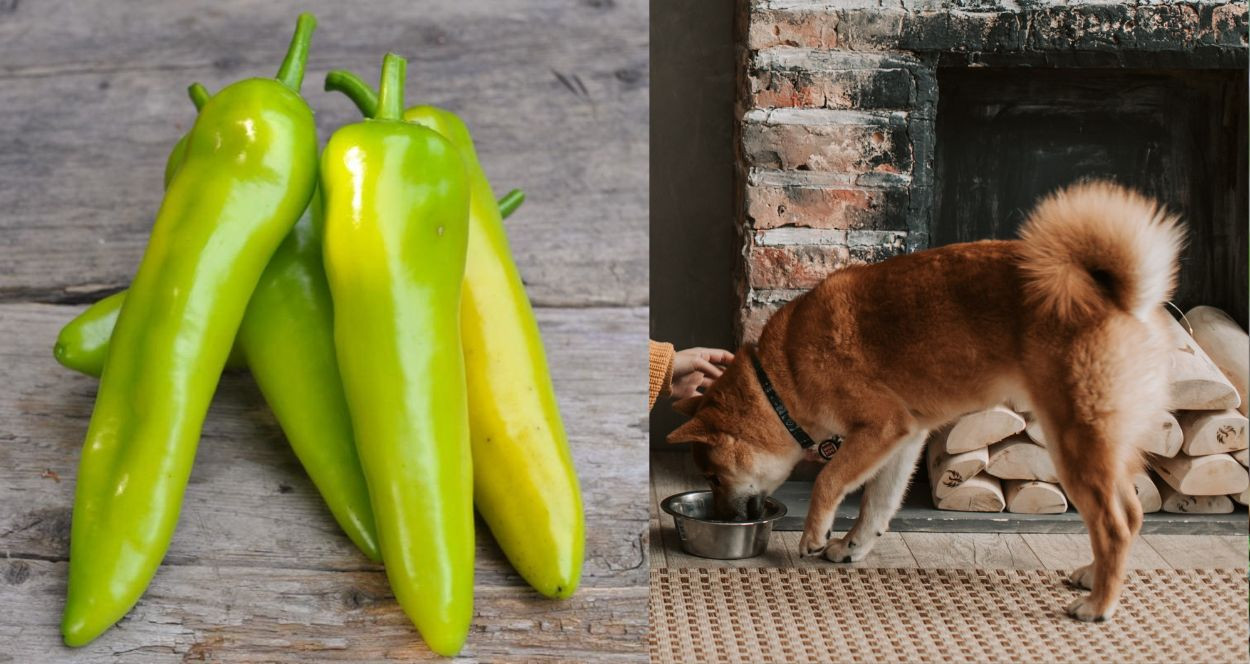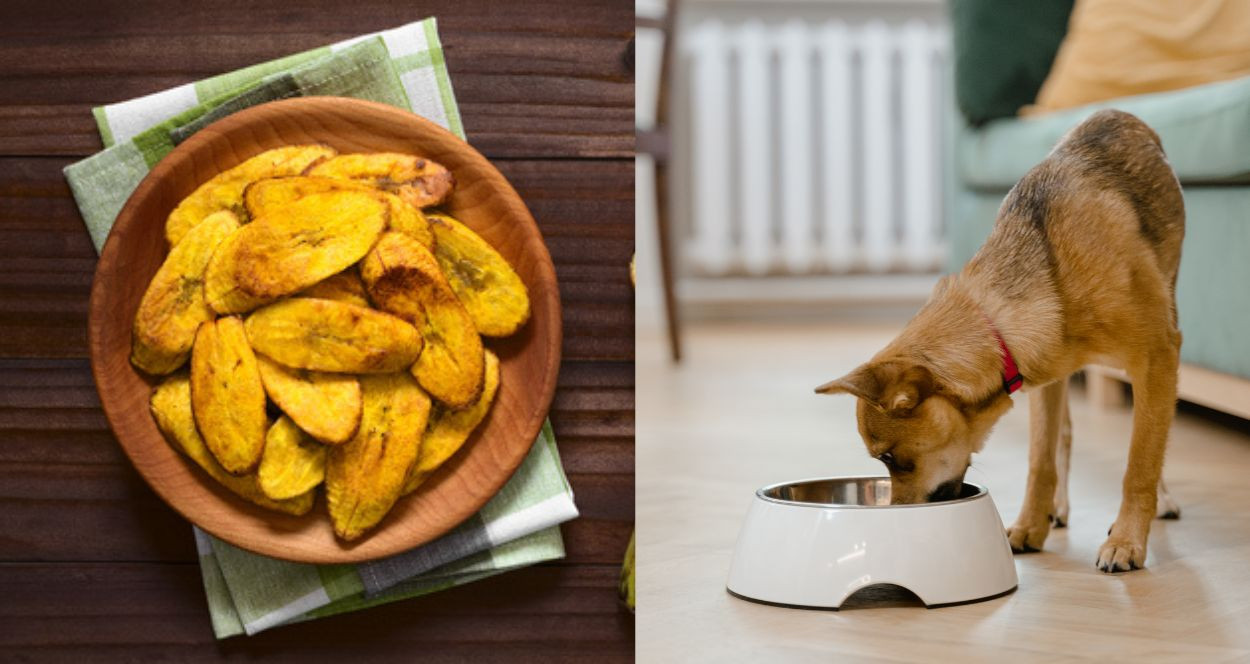Fruits and vegetables are not only good for humans, but also for dogs and cats. If you add some treats made entirely from fruits and vegetables to your pet's bowl, you should reap many health benefits.

Most people feed dogs packaged food. There are many dog or cat foods available in the market, and they offer a great source of vitamins, minerals and other nutrients.
But did you know that they put some preservatives in the packets to extend the shelf life of the food? And these preservatives are not good for the health of your furry friend?
As pet owners we always choose the best for our pets, and strive to give our pets a healthy and good environment.
Don't risk using packaged foods. If you feed your dogs ready-made food, make sure to choose a good brand, and not rely entirely on ready-made food. Rather, add some things like fruits and vegetables to their diet.
Why Choose Homemade Dog Treats?
When you make treats at home you add healthy ingredients that are beneficial to your dog, it all depends on what ingredients you use. You can completely avoid ingredients that are not good for dogs' health.
If your dog suffers from food allergies, you can customize the treat and add the appropriate ingredients. Homemade treats are also a budget-friendly and fun activity for you and your dog.
Before making any treats, it is important to know which fruits and vegetables are safe for dogs, as there are many human foods that are harmful to dogs.
So must read our article "The Best Fruits and Vegetables for Dogs" where we fully cover which fruits and vegetables are good and toxic for dogs, and also cover the nutritional content.
Basic Guidelines for Making Dog Treats
When making dog treats, choose fresh, organic ingredients whenever possible. Keep portions small to avoid overfeeding. Proper storage is crucial to maintain freshness and prevent spoilage.
Baked Recipes
Recipe 1: Apple and Carrot Biscuits
Ingredients:
- 1 cup grated carrots
- 1 apple, peeled and grated
- 2 cups whole wheat flour
- 1/4 cup rolled oats
- 1/2 cup unsweetened applesauce
Instructions:
- Preheat your oven to 350°F (175°C).
- Mix all the ingredients in a bowl until well combined.
- Roll out the dough and cut into desired shapes.
- Place on a baking sheet and bake for 25-30 minutes or until golden brown.
- Let cool completely before serving.
Storage:
Store in an airtight container in the refrigerator for up to a week, or freeze for longer storage.
Recipe 2: Blueberry and Sweet Potato Chews
Ingredients:
- 1 cup mashed sweet potatoes
- 1/2 cup fresh blueberries
- 2 cups whole wheat flour
- 1/4 cup flax-seed meal
Instructions:
- Preheat your oven to 325°F (165°C).
- Combine all ingredients in a mixing bowl.
- Roll out the mixture and cut into strips or shapes.
- Place on a baking sheet and bake for 30-35 minutes.
- Allow to cool before serving.
Storage:
Keep in an airtight container in the fridge for up to a week, or freeze for up to three months.
Recipe 3: Banana and Pumpkin Paws
Ingredients:
- 1 ripe banana, mashed
- 1/2 cup pumpkin puree
- 2 cups oat flour
- 1 egg
Instructions:
- Preheat your oven to 350°F (175°C).
- Mix all the ingredients together in a bowl.
- Roll out the dough and cut into paw shapes.
- Place on a baking sheet and bake for 20-25 minutes.
- Let cool before serving.
Storage:
Store in the refrigerator for up to a week, or freeze for extended shelf life.
No Bake Recipes
Recipe 1: Energy Balls For Dogs
Ingredients:
- 3/4 cup peanut butter
- 1/4 cup water
- 1/4 tsp cinnamon
- 1 1/4 cup old-fashioned oats
- 2 Tbsp quinoa flakes
Instructions:
- In a medium-sized bowl mix together peanut butter and water until combined.
- Add cinnamon, oats, and quinoa flakes. Stir until completely mixed.
- Line a cookie sheet with parchment or wax paper.
- Form balls and place them on the lined cookie sheet.
- Chill or freeze and reward your dog with a healthy homemade treat.
Notes:
**Remember to check the peanut butter for Xylitol as it is toxic to dogs.
Recipe 2: Berry Veggie Bites
Ingredients:
- 1 cup mashed banana (make sure there are no banana peels!)
- ½ cup unsweetened applesauce
- ½ cup cooked and mashed sweet potato (no skin)
- ½ cup rolled oats
- ¼ cup chopped blueberries (or other dog-safe berries)
- ¼ cup grated carrots
Instructions:
- In a large bowl, mash the banana until smooth.
- Add the applesauce, sweet potato, oats, blueberries, and carrots. Mix well until everything is well combined.
- If the mixture seems too wet, add a little more rolled oats, one tablespoon at a time, until it reaches a consistency that can be easily rolled into balls.
- Using a spoon or cookie scoop, portion out the mixture and roll into bite-sized balls.
- Place the balls on a baking sheet lined with parchment paper.
- Refrigerate for at least 1 hour, or until firm.
Storage:
The no-bake dog treats can be stored in an airtight container in the refrigerator for up to a week. This will help keep them fresh and prevent them from drying out or spoiling.
Recipe 3: Frozen Yogurt Bark with Pumpkin and Apples
Ingredients:
- 1 cup plain whole milk yogurt (unsweetened)
- ½ cup unsweetened pumpkin puree
- ¼ cup chopped apple (seeds and core removed)
- ¼ cup chopped blueberries
Instructions:
- In a medium bowl, whisk together the yogurt and pumpkin puree until smooth.
- Gently fold in the chopped apple and blueberries.
- Line a baking sheet with parchment paper. Pour the yogurt mixture evenly onto the baking sheet, spreading it out into a thin layer.
- Use a spoon to swirl the mixture slightly, creating a decorative pattern (optional).
- Place the baking sheet in the freezer for at least 4 hours, or until completely frozen solid.
Storage:
For storage, leftover frozen bark can be kept in an airtight container in the freezer for up to 2 weeks. This will help maintain its freshness and prevent freezer burn.
Conclusion
Making homemade dog treats with fruits and vegetables is a wonderful way to ensure your dog enjoys healthy, delicious snacks. You control the ingredients, save money, and can tailor treats to your dog’s specific needs. Give it a try and watch your furry friend enjoy the tasty benefits!
FAQs
- How often can I give my dog homemade treats?
- It’s best to give treats in moderation. They should make up no more than 10% of your dog’s daily calorie intake.
- What should I do if my dog has an allergic reaction?
- If you notice signs of an allergic reaction, such as itching, swelling, or digestive issues, stop giving the treat immediately and consult your veterinarian.
- How long do homemade dog treats last?
- When stored properly in the refrigerator, most homemade treats last about a week. For longer storage, freeze them.
- Are there any grains I can add to these recipes?
- Yes, grains like oats, brown rice, and quinoa can be added to dog treat recipes. They provide additional nutrients and variety.










